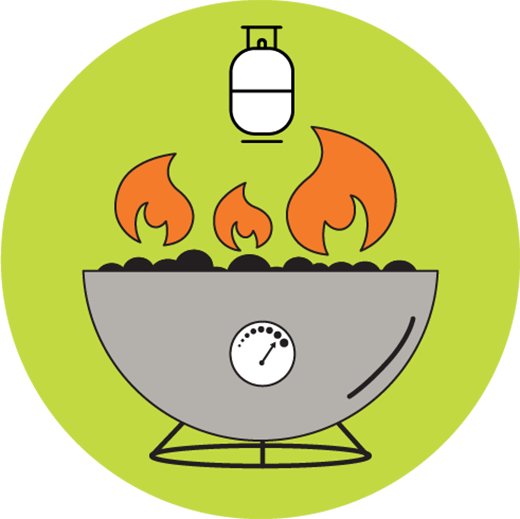
Fire safety
Kejimkujik National Park and National Historic Site
Learn how to have a safe campfire and which stoves and other heating devices to use during a fire ban at Kejimkujik.
Report any wildfires, illegal campfires, or suspicious smoke to Parks Canada at 1-800-565-2224 or call 911.
On this page
- How to have a safe campfire
- Avoid having an unsafe campfire
- How to light a campfire
- Fire ban information


How to have a safe campfire
Before your campfire:
- Always check to ensure there aren't any fire bans. Campfires may not be allowed during periods of high fire danger. Check the important bulletins or call the Visitor Centre: 902-682-2772.
- Purchase firewood at Kejimkujik or bring kiln-dried wood in a sealed plastic bag. There is a prohibition on importing firewood into Kejimkujik.
During your campfire:
- Light your campfire only in a designated metal fire box.
- Fires must be attended to at all times.
- Keep campfires small to conserve wood.
- Always keep a water bucket nearby in case of emergencies, or to put the fire out when you are done.
Putting out your campfire:
- Completely extinguish your campfire with water. Before you leave, soak the fire, stir the embers, and soak it again until it is cool to the touch.
Avoid having an unsafe campfire
- Do not bring in firewood or kindling from outside Kejimkujik – unless it is kiln-dried wood in a sealed plastic bag.
- Do not collect deadfall from the surrounding forest for burning.
- Do not start a campfire if there is a fire ban at Kejimkujik.
- Fires are not permitted outside of designated firepits or boxes (this includes on all beaches and rocky surfaces).
- Campfires are not allowed at some backcountry campsites. Check the backcountry camping information or ask at the Visitor Centre.
- Never leave a flame unattended.
- Do not throw cigarettes on the ground. Put them out and discard them in a bin.
- Never leave a fire pit unattended while it is still warm.
Fines for burning illegally
In a national park, burning illegally could lead to a fine of up to $25,000.
How to light a campfire
Never started a campfire before? Watch the following video and you’ll be roasting marshmallows in no time!
Fire ban information
A fire ban is a legal restriction on certain types of fires to prevent human-caused wildfires. Some activities are not permitted during a full or partial fire ban.
In a national park, burning illegally could lead to a fine of up to $25,000.
Find out if a fire ban is in place: check the important bulletins or call the Visitor Centre: 902-682-2772.
Permitted during a fire ban
Use of the following items is permitted during a fire ban:






in fully enclosed buildings
Prohibited during a fire ban
Use of the following items is prohibited during a fire ban:






Reasons for a fire ban
Fire bans are based on local fire hazards, current and forecasted weather conditions, the amount of moisture in vegetation, the regional wildfire situation, and the availability of responders and equipment. Current and forecasted conditions are evaluated daily.
Fire ban status is determined by long term trends rather than daily weather or fire danger.
Fire danger index
Fire danger is an index that tells us how easily a fire could start, how difficult a fire may be to control and how long a fire might burn.
Why is there a fire ban even though it is cold and rainy?
It takes a lot of rain to restore moisture to deep soil layers, trees, and logs that have dried out. Rain quickly evaporates when followed by warm temperatures and wind. This means fire danger can quickly return to high or extreme.
The regional wildfire situation may be more active. It is important for Parks Canada not to have human-caused fires divert resources from naturally caused ones in other areas.
Provincial fire bans do not apply to national parks
Local fire hazards, the availability of responders and equipment, and conditions such as weather, elevation, and forest health are not always the same in the province and national parks.
More information
Parks Canada: http://parkscanada.gc.ca/fire-alerts
- Date modified :